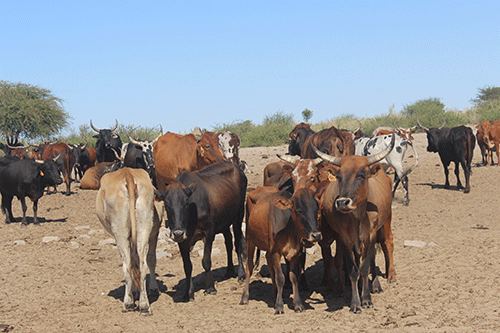Farmers in northern Namibia can breathe a sigh of relief following the government’s decision to compel its entities to buy meat products from suppliers north of the red line, creating a new market.
These entities include but are not limited to public schools, universities, State hospitals and correctional facilities. The areas north of the red line are dubbed the Northern Communal Areas (NCAs).
The government’s decision is contained in a gazette issued by finance minister Iipumbu Shiimi on 31 January, titled ‘Code of Good Practice’.
It seeks to put into practice section 71 and 72 of the Public Procurement Act, which gives locals preference in the State’s procurement through the reservation of certain procurement of goods.
The code also aims to promote, facilitate and strengthen measures to implement the empowerment and government’s industrialisation policies by providing a framework for the application of preferences and reservations under the Act without compromising the standards of goods, works and services, and value for money.
The gazette directs the Central Procurement Board of Namibia (CPBN) or government offices, ministries and agencies (OMAs) operating in the north to explicitly indicate in their tender processes and documents that meat intended for consumption in the north must be sourced from north of the controversial veterinary cordon fence (VCF).
The government newsletter on the procurement of raw meat of cloven-hoofed animals to be supplied north of the veterinary cordon fence covers beef, sheep, goat, pork and game.
“The board or public entities must include provisions in their bidding documents specifying that raw meat of cloven-hoofed animals, inclusive of beef, sheep, goat, pork or game to be supplied north of the veterinary cordon fence, must be sourced from suppliers north of the veterinary cordon fence,” Shiimi says in the dossier.
The procurement of raw meat for consumption at public entities from south of the red line is barred.
“It is not allowed to procure raw meat of cloven-hoofed animals south of the veterinary cordon fence to be supplied north of that fence, unless the supply of such meat north of the veterinary cordon fence is insufficient to satisfy the demand there,” Shiimi stated in no uncertain terms.
There are, however, conditions attached to the new rules.
The only source for the procurement of meat for supply to the north must be abattoirs approved by the Meat Board of Namibia, unless the supply from such abattoirs is insufficient for the demand of raw meat north of the veterinary cordon fence.
“Subject to sub-paragraph (one), where the board or a public entity determines that there is no sufficient supply of raw meat north of the veterinary cordon fence or no responsiveness from the identified categories of local suppliers, the Board or public entity must note in its procurement records such non-sufficiency of supply or non-responsiveness,” he added.
He reiterated: “A successful bidder may not source cloven-hoofed animals from south of the veterinary cordon fence for purposes of supplying raw meat north of the veterinary cordon fence under this code of good practice, unless cloven-hoofed animals north of the veterinary cordon fence are insufficient to satisfy the demand for the supply of raw meat north of the veterinary cordon fence.”
Over the years, northern farmers have rued the segregation brought about by the red line through the veterinary cordon fence, compounded by poor marketing opportunities, grazing management, stock theft and lack of funding.
Other challenges include the poor viability of abattoirs, which leads to uncompetitive market prices, climate change, and the high cost of production.
Notoriously known as the ‘red line’, the VCF is a border between north and south, which is used as an animal disease control mechanism.
Late last year, the Namibia National Farmers Union (NNFU) pointed to the untapped potential for the NCAs’ market, a relatively large herd size finding itself in a huge informal market.
There are an estimated 1.5 million cattle in the NCAs.
The NNFU’s study also called for the expansion of the Foot and Mouth Disease (FMD)-free zone. The zone will enable NCAs which have not recorded FMD cases in decades to have access to the lucrative markets south of the red line, and others such as South Africa and the European Union (EU).
“The creation of a new FMD-free zone will lead to increased cattle prices, which would eventually lead to increased revenue for farmers. The study also highlighted non-monetary benefits of creating an FMD-free zone, such as employment and new markets’ creation,” stated the union.
The NCAs cover parts of the Kunene, Omusati, Oshana, Ohangwena, Oshikoto, Kavango West, Kavango East and Zambezi regions. Along with South Africa and Botswana, Namibia is one of the biggest beef exporters to the EU.
Meanwhile, Affirmative Repositioning leader Job Amupanda is in court, fighting to remove the veterinary cordon fence.
“I will never withdraw, even if I have to sell everything, I have… in my lifetime, it will be removed… even if I am 90, I will be fighting for its removal… my children cannot suffer the same way,” he was quoted as saying late last year.
In the case, Amupanda faces an uphill battle against land reform minister Calle Schlettwein, the government of the Republic of Namibia, attorney general Festus Mbandeka, an official from the directorate of veterinary services Hango Nambinga and the Meat Board of Namibia. – emumbuu@nepc.com.na


